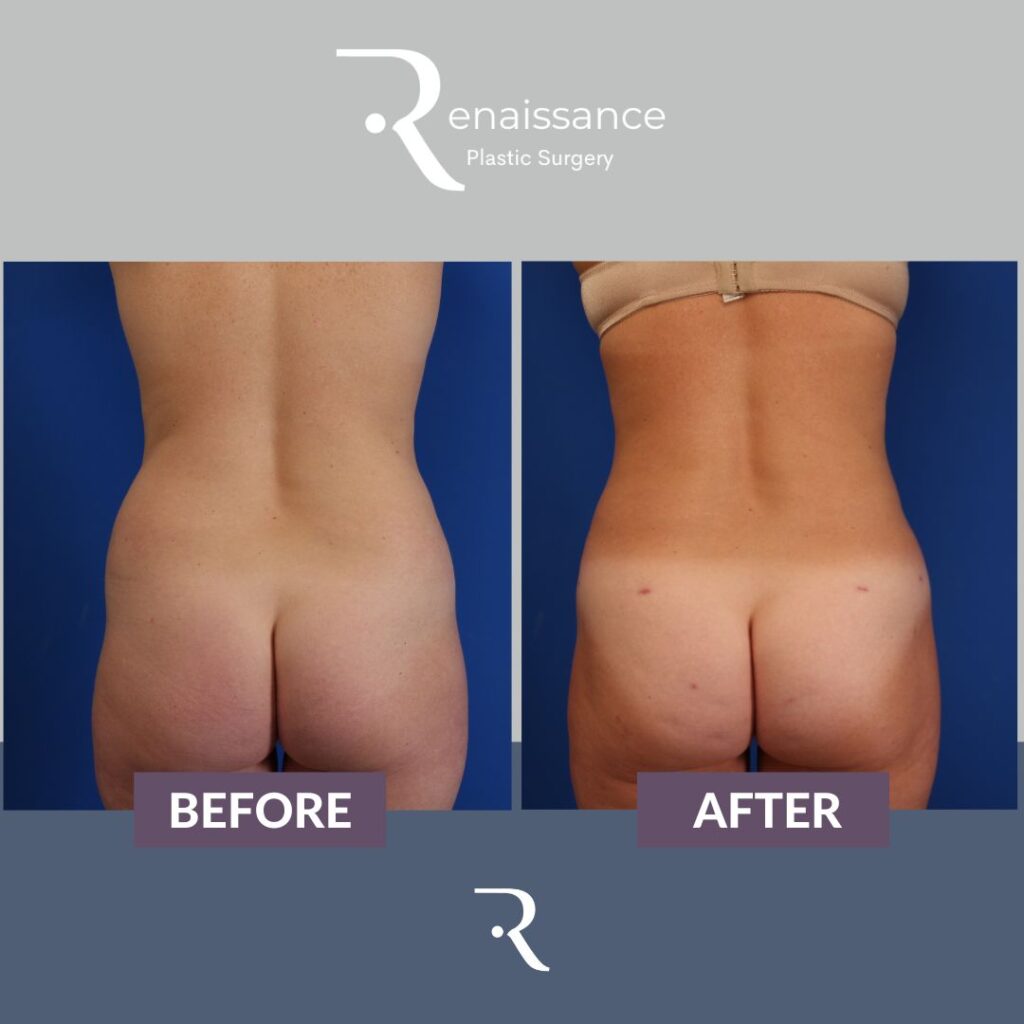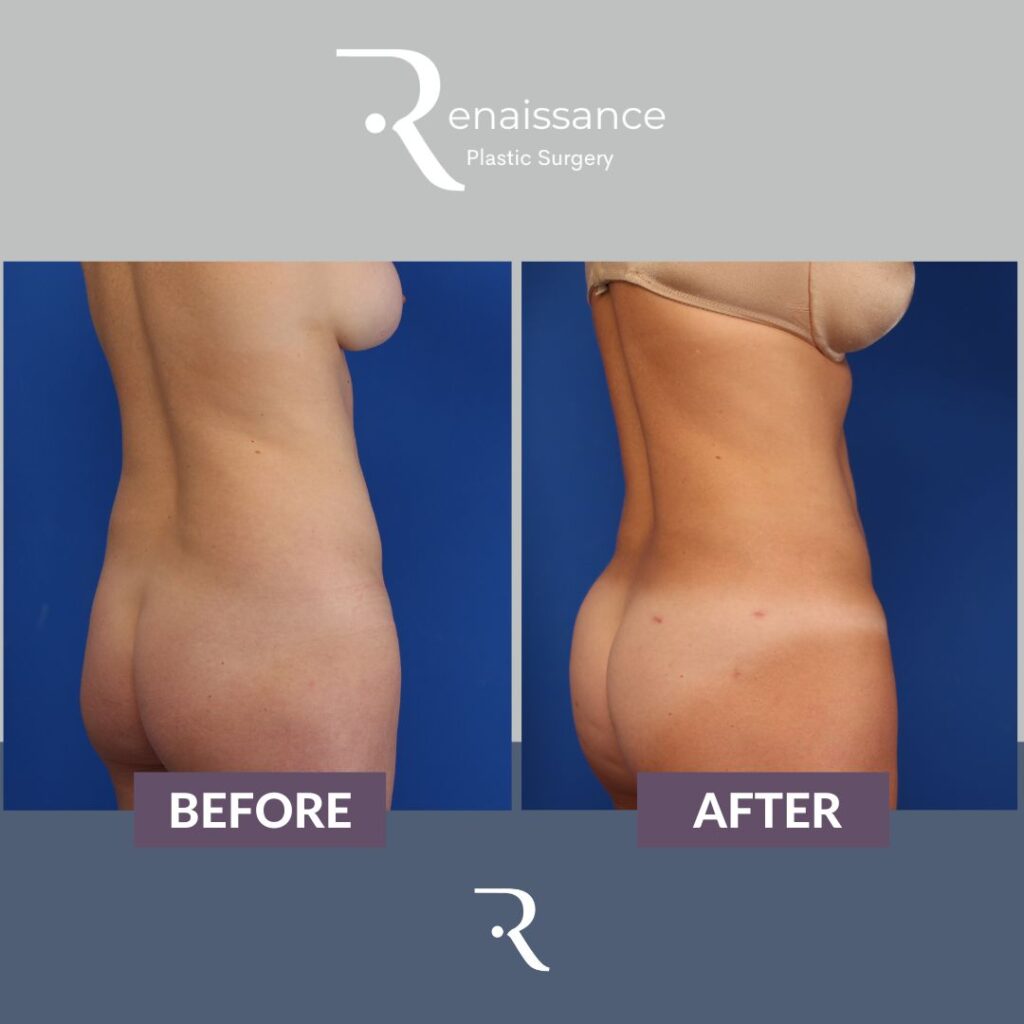Fat Injection
Board Certified Plastic Surgeons Experienced Accredited Surgery Center
Understanding Fat Injection
Fat injection (sometimes called fat transfer or fat grafting) is a procedure in which fat removed from your body is used to enhance another part of the body, such as wrinkles, thin lips, or scars with skin depressions. Fat injections can sometimes replace dermal fillers, providing youthful volume in the face, neck, or hands.
Fat can also be grafted to the breasts to mask implant rippling or to give fullness to the upper breast that is often lost after pregnancy.
Surgeons can also perform a procedure called a “SIEF” (Simultaneous Implant Exchange and Fat transfer). This is where implants are removed, and the breast is grafted with the patient’s own fat.
The surgeons at Renaissance Plastic Surgery have performed numerous fat injections for their patients with excellent results. This highly personalized procedure is based on how you wish your appearance to look after your injections. Our surgeons will be honest with you about what is possible and safe. Fat injections require experience, skill, and a sculptor’s eye to create the optimal aesthetic outcome.
Board-Certified Plastic Surgeons
All of our surgeons are Board-Certified Plastic Surgeons by the American Board of Plastic Surgery.
Experience Matters
We have over 60+ years of practical cosmetic and plastic surgery experience serving patients just like you!
Qualified Staff
Our expert team of medical professionals is here to help you every step of the way through your journey.
Fat Injection Gallery
What can fat injections accomplish?

- Create fuller lips
- Level out depressed scars
- Restore lost volume in the face, neck, and hands
- Improve sunken, sagging cheeks
- Minimize lines, wrinkles, furrows, and creases
- Fill areas where too much fat has been removed during a previous liposuction procedure
- Correct depressions from trauma or previous surgery
- Help restore a natural shape during breast reconstruction
Fat Injection Experts in Macon, GA
The Science Behind Fat Injections: How Does It Work?

Harvesting the Fat
Processing and Purification
Injection into the Target Area
Individual Variability
What happens during the fat transfer injection procedure?
Fat transfer and fat injections take 1-3 hours, depending on the number of areas to be treated. It is usually an outpatient procedure performed under general anesthesia or sometimes under a local anesthetic and sedation. Even if you are not under a general anesthetic, you will feel drowsy after your treatment. So, you will need someone to drive you home and perhaps help you the next day.
During the procedure, a small cannula (needle) is used to suction fat from one area of the body, such as the abdomen, thighs, or buttocks. The extracted fat is then injected with a specialized cannula into the areas that you wish to be treated. Our surgeons will thoroughly examine you and discuss the optimal fat removal and injection areas.

What can you expect after fat injections?

How long do the results of fat injections last?
Is fat injection right for you?

There are a number of treatments available for lost volume, lines, and wrinkles. We will advise the best procedure(s) to achieve the look you want. Fat injections are advantageous because there is no chance of an allergic reaction. Other possible procedures include Botox, dermal fillers, facelift, or skin resurfacing.
Most importantly, we want to answer all of your questions so that you feel completely comfortable with us and with the procedure(s) you have chosen.
Board-Certified Plastic Surgeons
All Our Providers are Board-Certified and State-Licensed Medical Professionals.
Experience Matters
All of Our Medical Providers Have Years of Plastic and Cosmetic Surgery Experience.
Comprehensive Care
Surgical and Non-Surgical Options. Plus an Accredited Surgery Center On-Site.
Qualified & Caring Staff
Our Staff Has Years of Experience Providing Plastic Surgery Care and is Ready to Serve You!

